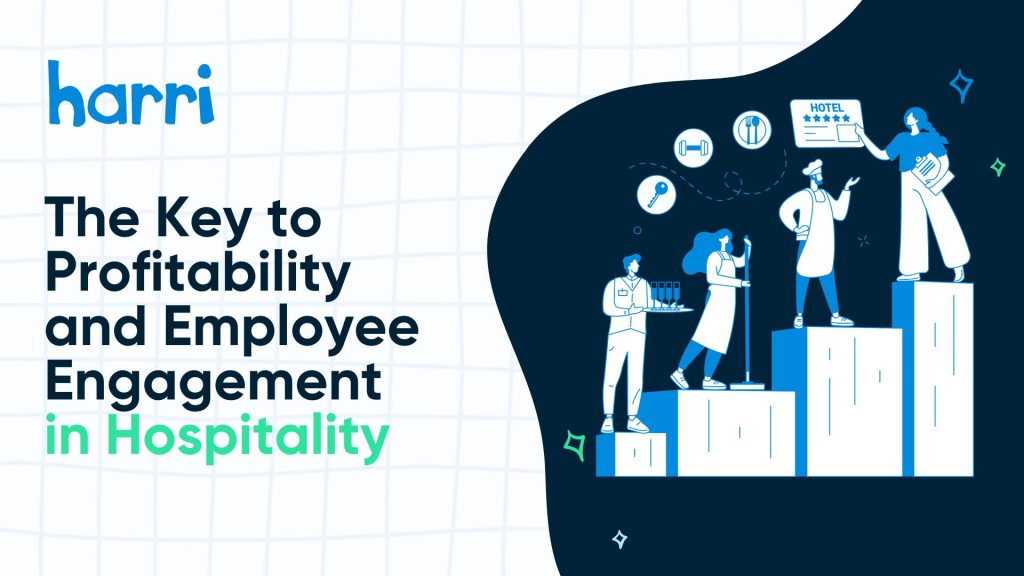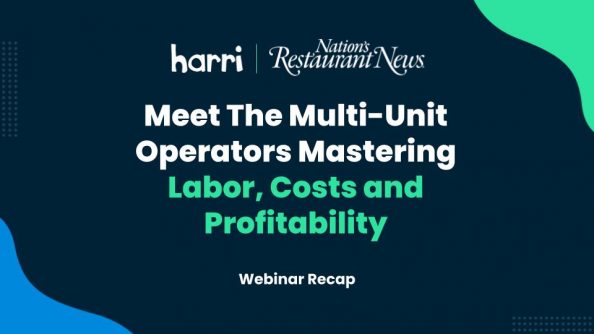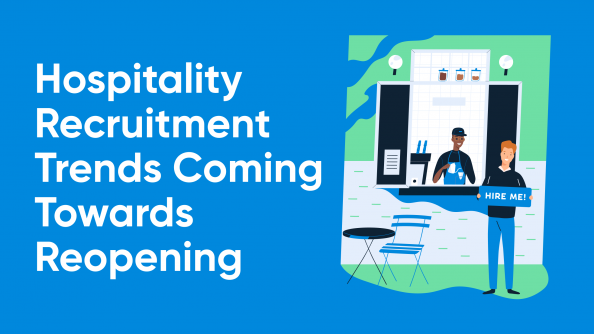Labour Optimisation in Hospitality: A Key to Profitability and Employee Engagement

- By Harri Insider Team | December 6, 2024
The hospitality sector operates on tight margins, where every decision about labour costs and staffing levels can significantly impact profitability. At the same time, the industry’s reliance on its people means that businesses must balance financial objectives with the need to engage and retain their workforce. Labour optimisation, which involves aligning the right people with the right roles at the right times, is a vital strategy for achieving this balance.
This blog explores the concept of labour optimisation and how it not only boosts the bottom line but also creates opportunities for staff development, ultimately enhancing the employee and customer experience.
Understanding Labour Optimisation
Labour optimisation is more than just efficient scheduling. It involves a holistic approach to workforce management that considers employee skills, operational needs, and cost-effectiveness. It’s about making sure every hour worked adds value, whether by improving service levels during peak times or reducing unnecessary hours during quieter periods.
At its core, labour optimisation requires data-driven decisions. By leveraging workforce management tools, businesses can gain insights into customer demand, employee performance, and labour costs. These insights enable managers to allocate resources strategically, ensuring that operations run smoothly while controlling expenses.
One example is cross-training staff to perform multiple roles. A team member who can switch seamlessly between front-of-house and back-of-house tasks adds flexibility to the workforce, enabling managers to adapt quickly to fluctuating demands. This approach not only maximises productivity but also empowers employees to develop new skills and advance their careers.
The Financial Case for Labour Optimisation
Labour costs represent the largest controllable expense for most hospitality businesses. Inefficiencies in scheduling—whether from overstaffing during slow periods or understaffing during busy times—can lead to unnecessary costs and lost revenue opportunities.
Optimising labour isn’t just about cutting hours; it’s about aligning staffing levels with actual demand. By analysing historical data and using predictive analytics, businesses can create schedules that reflect patterns of customer activity. For instance, a restaurant might identify that lunch rushes are shorter on Mondays compared to Fridays, enabling managers to adjust staffing accordingly.
The financial benefits are clear: fewer wasted hours, improved customer satisfaction, and a stronger bottom line. For businesses looking to quantify these savings, Harri’s ROI calculator offers a practical tool to generate an impact report based on current scheduling practices. This tool calculates potential savings by reducing inefficiencies in schedule creation and adjustments. You can explore it here.

The Employee Experience
While labour optimisation often focuses on cost savings, its impact on employees is equally significant. Predictable and consistent scheduling fosters trust and improves morale, particularly in an industry known for irregular hours and last-minute changes.
Moreover, by aligning staffing with demand, businesses can reduce the stress of understaffed shifts. Employees are less likely to feel overworked or overwhelmed, leading to higher job satisfaction and lower turnover rates. At the same time, opportunities for cross-training and skill development create pathways for career growth, further enhancing engagement.
Engaged employees are more likely to deliver exceptional service, creating a positive feedback loop that benefits the entire business. Customers notice when staff are attentive and motivated, and this can translate into increased loyalty and positive reviews.
The Role of Technology in Labour Optimisation
Achieving labour optimisation at scale requires the support of technology. Advanced workforce management systems provide the tools necessary to analyse data, predict demand, and implement efficient scheduling practices.
These systems enable businesses to take a granular approach to scheduling, optimising shifts down to 15-minute intervals if needed. This level of precision ensures that staffing levels are perfectly aligned with customer demand, eliminating both overstaffing and understaffing.
Additionally, workforce management technology simplifies compliance with labour regulations. For example, the recent Labour government policy changes introduced in the October 2024 UK Budget require greater transparency in scheduling and higher minimum wages. By automating processes such as schedule creation and labour cost tracking, businesses can ensure compliance without adding administrative burden.
Case Study: Bagel Factory’s Workforce Evolution Through Optimisation
Bagel Factory, a popular grab-and-go brand with locations spanning the UK and Ireland, faced challenges common to fast-paced food businesses: ensuring optimal labour allocation across multiple sites while maintaining high service standards. Managing fluctuating demand across diverse locations required a more sophisticated and dynamic approach to workforce management.
With Harri’s workforce optimisation tools, Bagel Factory redefined how it approached staffing. By implementing advanced scheduling and labour allocation strategies, the company achieved a balance between meeting operational needs and controlling labour costs. Harri’s platform enabled Bagel Factory to analyse patterns of peak and off-peak times, align staffing accordingly, and ensure team members were in the right place at the right time.
A significant outcome was the introduction of cross-training for employees, empowering team members to take on versatile roles. This not only allowed for seamless shift adjustments but also opened up career progression opportunities, enhancing employee satisfaction and reducing turnover rates.
For Bagel Factory, the results were measurable: improved cost efficiency, stronger employee engagement, and enhanced service quality. The experience underscores the power of labour optimisation in fostering both financial and cultural growth within an organisation. To learn more about how Harri supports businesses like Bagel Factory, click here.
The Long-Term Benefits of Labour Optimisation
Labour optimisation is not just a short-term solution; it’s a long-term strategy for building resilience and competitiveness. By continuously analysing and refining workforce practices, businesses can adapt to changing conditions while maintaining operational efficiency.
For employees, labour optimisation provides stability and growth opportunities, creating a workplace culture that attracts and retains top talent. For customers, it ensures a consistently high standard of service, regardless of demand fluctuations.
As the hospitality industry continues to evolve, businesses that invest in labour optimisation will be better positioned to navigate challenges and seize opportunities. It’s a strategy that benefits everyone involved—from the front-line team members to the customers they serve.
Labour optimisation represents a win-win scenario for hospitality businesses, employees, and customers. By aligning resources with demand, businesses can reduce costs, improve service quality, and create a more supportive environment for their teams.
With the help of advanced workforce management tools, these benefits are more accessible than ever. Whether you’re managing a single-site operation or a multinational brand, labour optimisation offers a pathway to greater efficiency and success.
Discover how much your business could save by exploring Harri’s ROI calculator here.



















